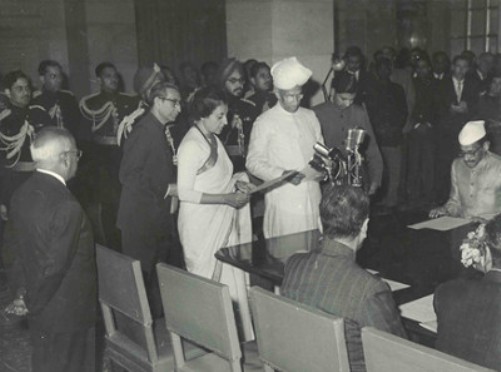January 19 in History
1966 - Indira Gandhi becomes India's first female prime minister
Following the death of Indian Prime Minister Lal Bahadur Shastri, Indira Gandhi becomes head of the Congress Party and thus prime minister of India on this day in 1966. She was India’s first female head of government and by the time of her assassination in 1984 was one of its most controversial. She was also the only female Prime Minister of India.
Gandhi was the daughter of Jawaharlal Nehru, the first prime minister of the independent Republic of India. She became a national political figure in 1955, when she was elected to the executive body of the Congress Party. In 1959, she served as president of the party and in 1964 was appointed to an important post in Lal Bahadur Shastri’s ruling government. Soon after becoming prime minister, Gandhi was challenged by the right wing of the Congress Party, and in the 1967 election she won only a narrow victory and thus had to rule with a deputy prime minister.
In 1971, she won a resounding re-election victory over the opposition and became the undisputed leader of India. That year, she ordered India’s invasion of Pakistan in support of the creation of Bangladesh, which won her greater popularity and led her New Congress Party to a landslide victory in national elections in 1972.
During the next few years, she presided over increasing civil unrest brought on by food shortages, inflation, and regional disputes. Her administration was criticized for its strong-arm tactics in dealing with these problems. Meanwhile, charges by the Socialist Party that she had defrauded the 1971 election led to a national scandal. In 1975, the High Court in Allahabad convicted her of a minor election infraction and banned her from politics for six years. In response, she declared a state of emergency throughout India, imprisoned thousands of political opponents, and restricted personal freedoms in the country. Among several unpopular programs during this period was the forced sterilization of men and women as a means of controlling population growth.
-history.com


